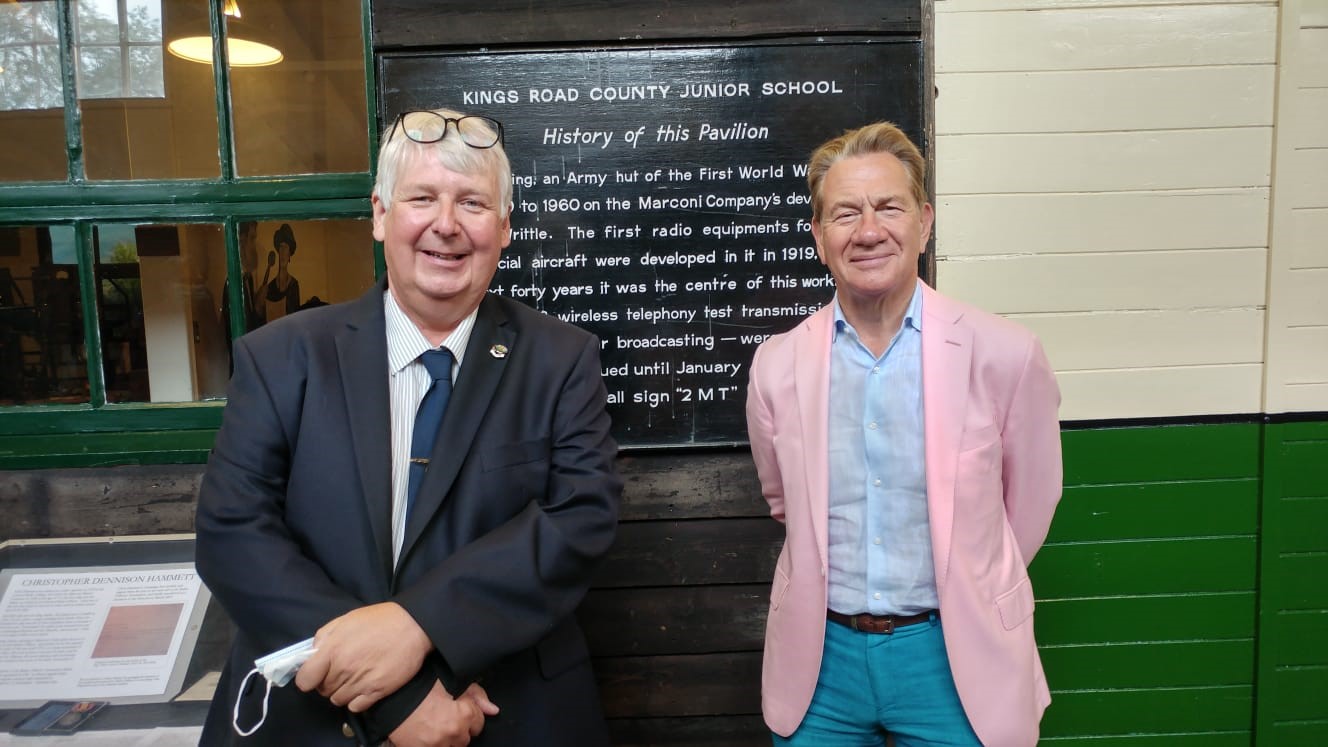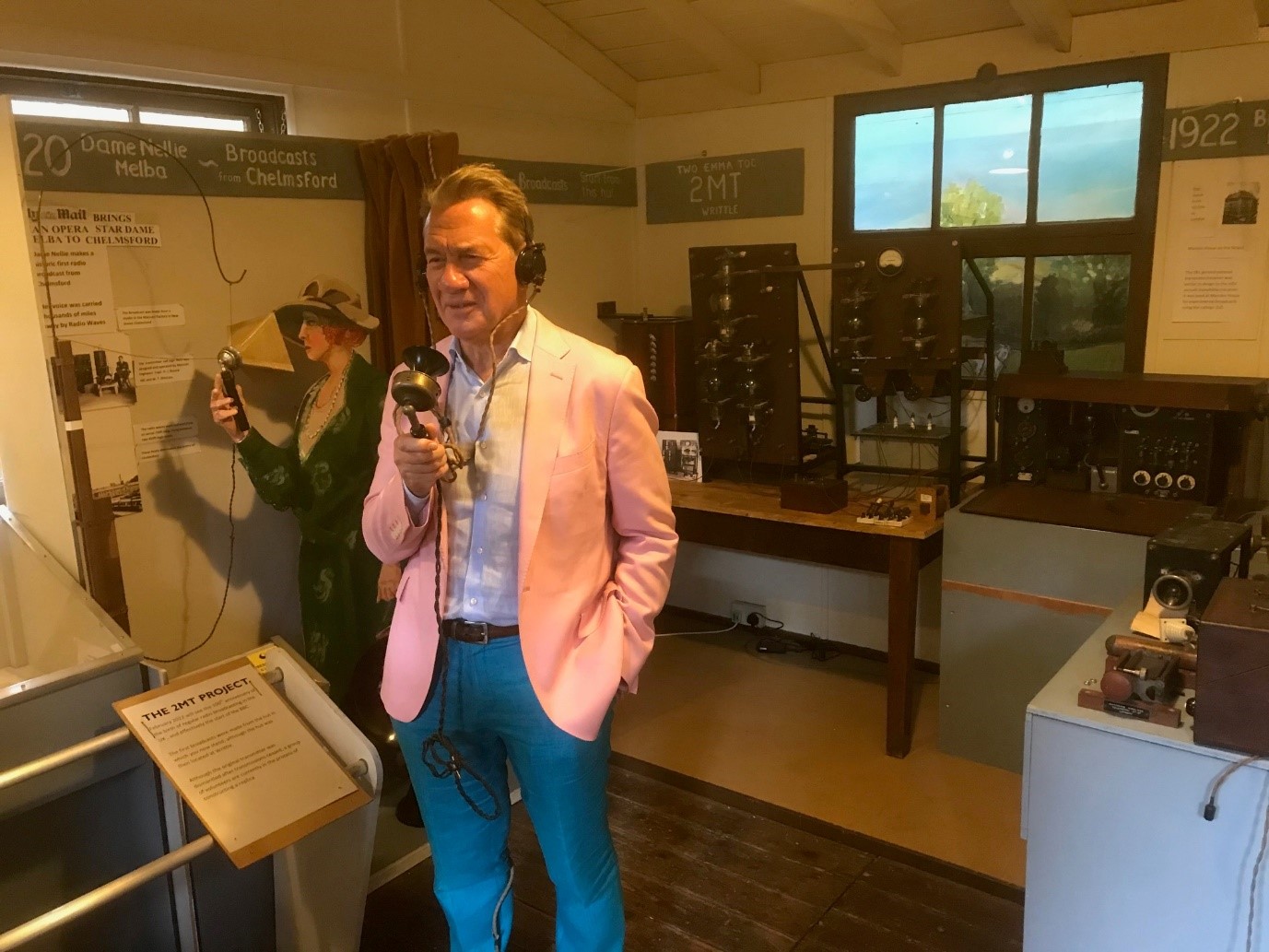By Tim Wander
Episode to be shown at 6:30 on Tuesday 4 May 2021 on BBC 2. Catch up on iPlayer.
A strange title in strange times. Many readers will know that the Museum's Sandford Mill site sits as one of 13 mills on the 13.8 mile-long Chelmer and Blackwater Navigation canal. This was opened in 1797, and connects Chelmsford with the tidal estuary of the River Blackwater at Heybridge Basin.
But it is a long way from the main Chelmsford railway station located on the Great Eastern Main Line that runs across the East of England. Westbound trains terminate at Liverpool Street and eastbound trains run to a number of destinations including Braintree, Clacton-on-Sea, Colchester Town, Ipswich and Norwich.
When the Covid-19 pandemic hit and global lockdown took hold, all theatre, television and film production came to a shuddering halt. Performers and production crews were sent home, confined to their own individual households just like their audiences, with little indication of how and when any creative industries could continue. One very popular series hit was Great British Railway Journeys (GBRJ), a BBC documentary series presented by Michael Portillo, a former Conservative MP and Cabinet Minister. The programme was first broadcast in 2010 on BBC Two and has returned annually for a total of 11 series. The series features Portillo travelling around the railway networks of Great Britain, Ireland and the Isle of Man, referring to Bradshaw's Guide and picking out people and places of interest as he travels.
GBRJ has come to Chelmsford once before. In Series 5 (Ep14) shown in 2014, the team came to visit Chelmsford filming the Dame Nellie Melba story inside the then derelict frontage of the Marconi New Street works. Back then Dr Geoff Bowles, Curator at Sandford Mill did the honours, helped by large 'Bob Dylanesque' scripted cards held up behind the camera.
When the new series (12) of GBRJ was finally able to restart last month the producers found it was difficult to find railway lines, places of interest and on-hand 'experts' able to accommodate the team and the revised filming process under very strict C-19 guidelines.

Despite the Chelmsford museums being closed, museum consultant, Marconi historian and CSES member Tim Wander agreed to try and help the BBC team. He suggested that as the 2020 Melba Centenary events draw to a close, it was time to look toward 2022 and the Centenary of the famous Writtle broadcasts in 1922 that led directly to the formation of the BBC.
With the support of the Chelmsford museum team two venues were selected, Writtle Village and the famous "Writtle Hut" preserved and protected inside the Sandford Mill museum site. Hopefully the title makes a little more sense now?
Driving up from the Isle of Wight in the last week of August, Tim met the crew for an early morning filming session on Writtle's village green. Being interviewed by Michael Portillo many feet away was a little challenging… for anyone not familiar with TV, filming any interview is conducted as five or six separate sections, sometimes shot 20 or more minutes apart. The camera films the questioner, then the answerer and both people's reactions all independently, then adds in a couple of changes of camera angle and a wide shot or two. It is time consuming, a little frustrating, but at least there is no need to shout back when you are wearing a microphone!
Another problem filming outside is changing light – as the sun goes behind clouds the 'tone and colour' of the images change – remember the independent filming of sections? They have to match or appear to have been shot in one continuous take. So it has to be done again and again.
But by far the biggest problem is noise. First attempts to film outside the original Cock and Bell public house where the original 1922 Writtle broadcasts were planned and some of the pioneering engineers actually lived proved impossible due to road noise, and drivers constantly blowing their horns. Why do they do that?
Filming in the middle of the village green proved equally difficult – we must thank the builders who turned off their angle grinders for us for 20 minutes to allow filming to complete. But of course Thursday is also Writtle bin collection day! Who knew? I also thought there were very few aircraft meant to be flying these days – apparently all those that are are circling the village of Writtle – the sound man's "Cut! – Go again when the plane leaves" became very familiar.
The second shoot location was inside the famous Writtle hut at Sandford Mill, opened especially for the BBC team. This was, of course, much quieter, but now indoors strict Covid-19 protocols came into play with masks on / masks off being a constant routine. But we got it done, the BBC team called it a 'FAB' smooth shoot and they headed off to their next location with everything safely "in the can."

For those not familiar with the story, on 14th February 1922, a weak and static-laden speech (telephony) radio signal crackled out from an old ex-army hut on the edge of a partly flooded muddy field at the bottom of 'Lowford' Lane in Writtle. The radio amateurs had waited a long time since Melba's concert in June 1920, but finally, a regular, scheduled, advertised radio broadcasting station had been licenced and authorised. The radio station was known by its radio call sign of 2MT, Two-Emma-Toc in the phonetic alphabet of the day, and it made history. The station's success would lead directly to the formation of the BBC.
The "Writtle hut" was the first British broadcasting radio station – now preserved and protected by Chelmsford Museum services at Sandford Mill. Recovered from the Kings Road School in 1989 it was rebuilt and restored by volunteers in 1993. It is also one of the best preserved WW1 army huts in existence. Of course Christopher Cockerel helped design the famous WW2 1155 bomber command radio receiver while working in the hut, and also ran his first experiments trying to make a boat hover over the water while working there as a Marconi engineer. Later, legendary footballer Geoff Hurst started his career in there… but these are all tales for another episode. The BBC team are also talking about coming back to talk about Hall Street and the Titanic, but that will also be another day.
Today, as we fast approach the centenary of the Birth of British Broadcasting it is perhaps a little humbling to think that our entire modern age of media, broadcasting and even the Internet started in a small Hut in Writtle. It all came about because some young engineers had the audacity, humour and technical skill to invent the art and science of radio broadcasting as we know it.

This episode of Michael Portillo's Great British Rail Journeys will be shown at 6:30 on Tuesday 4 May 2021 on BBC 2. Thanks to all who helped make it happen.
Credits
- Presenter: Michael Portillo
- Series Editor: Alison Kreps
- Production Company: Boundless West
- Director: Titus Ogilvy
- Executive Producer: John Comerford
